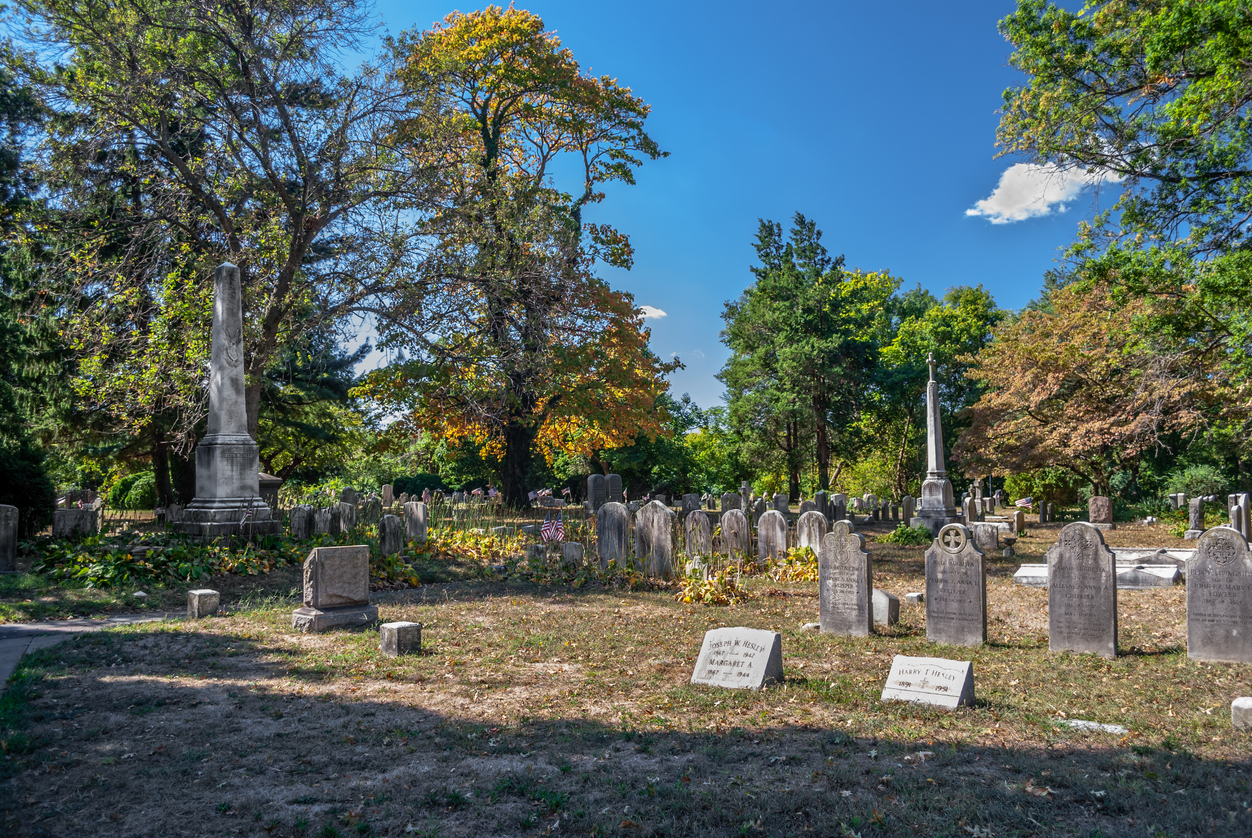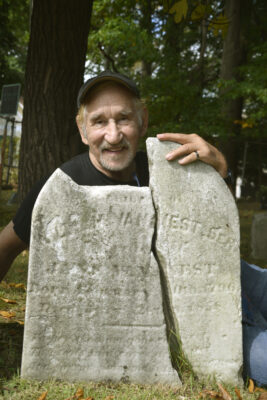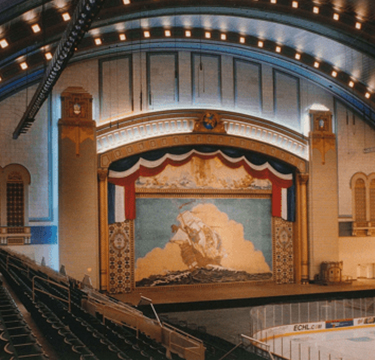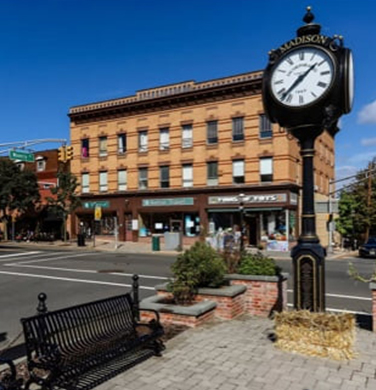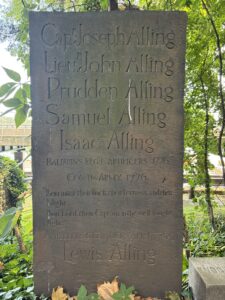
A Revolutionary War-era tombstone. Image Credit: Darren Tobia.
In 1835, Nathan Mead fled slavery on a Maryland plantation, but was apprehended after crossing over the New Jersey border. This was a time when the Fugitive Slave Act of 1793 threatened those seeking freedom with immediate return without trial.
However, a New Jersey Supreme Court Judge and abolitionist Joseph Hornblower delivered a ruling that eventually allowed Mead to gain his freedom.
Today, a tall, marble obelisk in Newark’s Mount Pleasant Cemetery marks Hornblower’s burial site — a testament to the many contributions Belleville residents have made to the nation. After a careful restoration, the monument looks much the same as the day he was buried in 1864.
“Something as historic as this should be in pristine condition,” said Michael Perrone, president of the Belleville Historical Society.
Hornblower’s obelisk is one of hundreds of tombstones that Perrone’s organization has helped clean and repair.
In 2012, journalist and fellow historical society member Anthony Buccino authored a book called Belleville Sons Honor Roll, inspiring Perrone and his colleagues to track down the burial places of Belleville’s veterans and fallen soldiers to clean their tombstones. In 2020, Perrone came to Mount Pleasant Cemetery to clean the site of Robert Gardner Bliss, a Belleville native who died in the Korean War.
“We came to clean his stone and never left,” said Perrone, Belleville’s town historian.
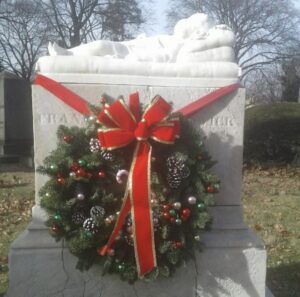
The grave of Frank Percy Chadwick. Credit: Belleville Historical Society.
These efforts are coming at a time when local preservationists are trying to revive the Victorian tradition of using cemeteries for weekend excursions, according to Liz Del Tufo, board president of the Mount Pleasant Cemetery.
In a neighborhood starved of green spaces, the cemetery offers a rare place of shade under the century-old sycamore trees. The caretakers of the cemetery reported seeing eagles flying over the cemetery.
“We want the residents to see this as their green space, much the way it was when it was first created,” Del Tufo, who spoke to Preservation New Jersey inside the historic brownstone gatehouse.
Mount Pleasant Cemetery is considered a rural cemetery, a type of burial ground that became popular in the early 19th century. Previously, the dead were buried in cities, often in churchyards. The first of its kind was Mount Auburn Cemetery in Boston, though Green-Wood Cemetery in Brooklyn is considered one of the finest examples.
“We’re often referred to as New Jersey’s Green-Wood Cemetery,” said Del Tufo,
The first person buried at Mount Pleasant Cemetery was 54-year-old Elizabeth Jacques in 1844, according to the cemetery’s National Register listing. However, visitors will find tombstones much older than that. The oldest headstones come from the churchyard of the Old First Presbyterian Church in downtown Newark that were rehomed when the churchyard was paved over in 1959 for a parking lot. On the eastern side of the cemetery, near the river, there is a Revolutionary War war headstone belonging to five members of the Alling family.
Many of the tombs were designed by father-son architects George Brown and A.Wallace Brown, including what might be one of Newark’s most spectacular mausoleums belonging to the founder of Prudential insurance John F. Dryden.
The cemetery’s website will soon feature a database that will let visitors search the names and locations of the others notables buried there, such as composer Samuel Ward, who penned “America, the Beautiful,” and inventor Seth Boyden.
“Every single soul that’s buried here, and where they’re buried, will be accessible online,” said Michele Butchko, president of Friends of Mount Pleasant Cemetery.
Although Perrone’s efforts are largely dedicated to war veterans and other luminaries from Belleville, he occasionally encounters a headstone that requires him to be less rigid in his mission — such as the grave of Frank Percy Chadwick, who was only one year old when she died in 1857. Next on the list to clean is the headstone of one-year-old Harriet Ward who died in 1915.
“You can imagine her parents coming here year after year,” Perrone said. “We try not to think too much and just focus on cleaning.”


